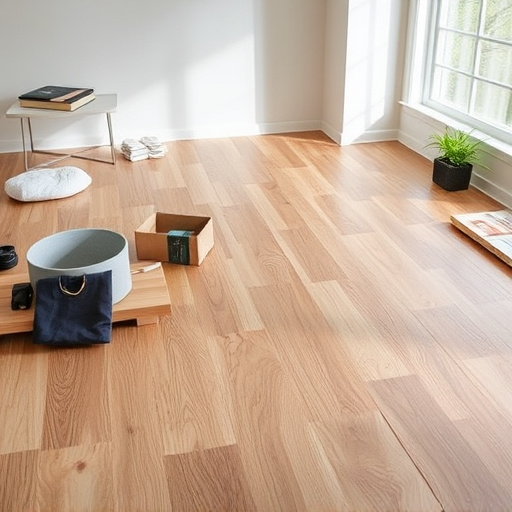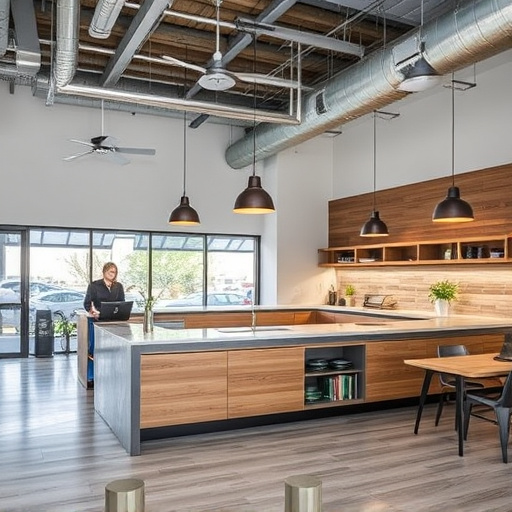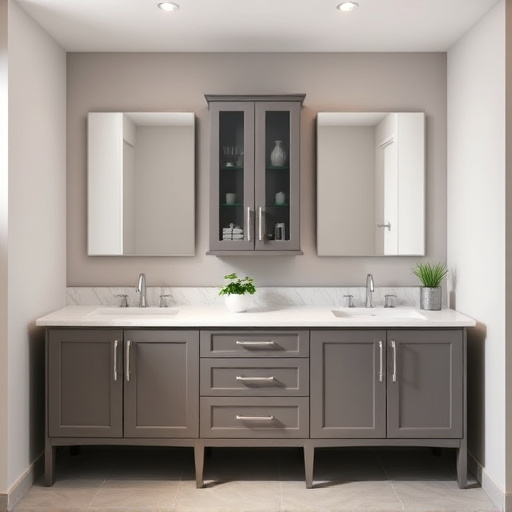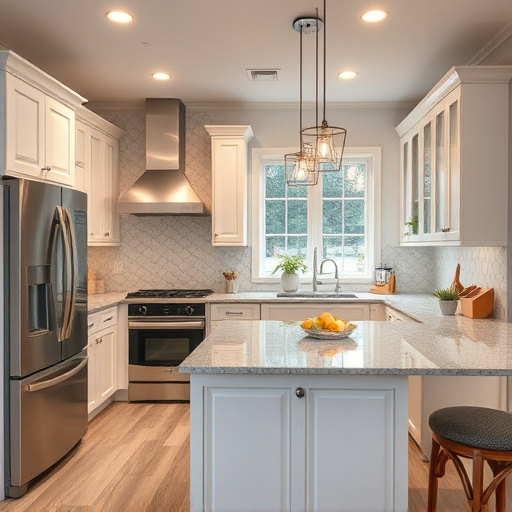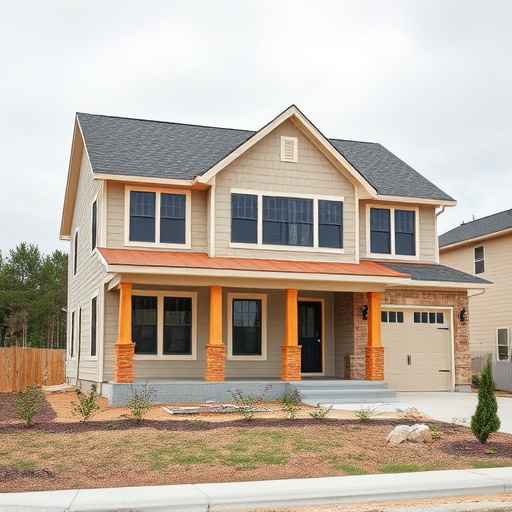The commercial design industry is shifting towards open-plan layouts, driven by demand for adaptable and collaborative work environments that encourage communication and creativity. Open concepts offer numerous advantages, including easier reconfiguration, enhanced transparency, and improved productivity, making them ideal for businesses looking to revitalize their workspaces through renovation or home improvement. This trend promotes collaboration, fosters innovation, and creates dynamic atmospheres in offices, retail spaces, and restaurants, leaving a lasting impression on clients.
“Unveiling the latest trends transforming modern commercial spaces, this article explores open-concept design’s surge in popularity. We delve into how open-plan layouts maximize flexibility and foster collaboration, with case studies showcasing their success in contemporary offices and retail settings. Additionally, we examine biophilic design’s integration of nature to enhance well-being, and the revolutionary impact of smart technology, including touchless controls and AI systems, on creating interactive commercial environments. Get ready to discover how these trends are redefining commercial design.”
- The Rise of Open-Plan Layouts: Unlocking Flexibility and Collaboration
- – Exploring the benefits of open-concept spaces in commercial settings
- – How open plans enhance productivity, creativity, and team dynamics
The Rise of Open-Plan Layouts: Unlocking Flexibility and Collaboration
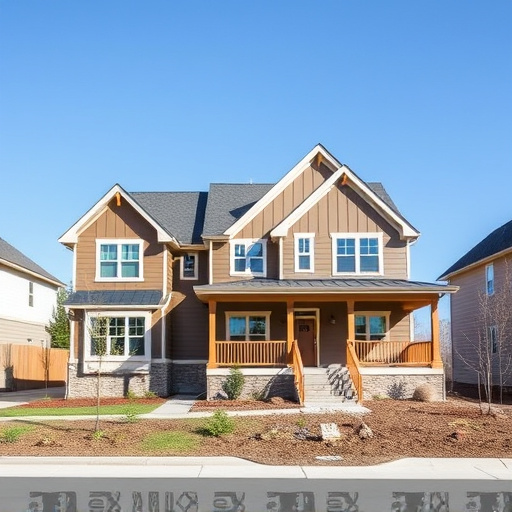
The commercial design world is witnessing a significant shift towards open-plan layouts, which are transforming traditional office and retail spaces. This trend is driven by the need for more flexible and collaborative environments that cater to modern business demands. In the past, separate rooms and enclosed offices were the norm, but today’s businesses seek spaces that encourage communication and foster creativity among employees.
Open-concept designs offer a multitude of benefits for commercial settings. They allow for easier reconfiguration of spaces, catering to changing team structures and project needs. Moreover, these layouts promote a sense of transparency, enabling better interaction between colleagues and clients alike. For businesses looking to enhance their working environment through renovation services or home improvement, adopting an open-plan design can be a game-changer, creating a vibrant atmosphere that stimulates productivity and innovation.
– Exploring the benefits of open-concept spaces in commercial settings
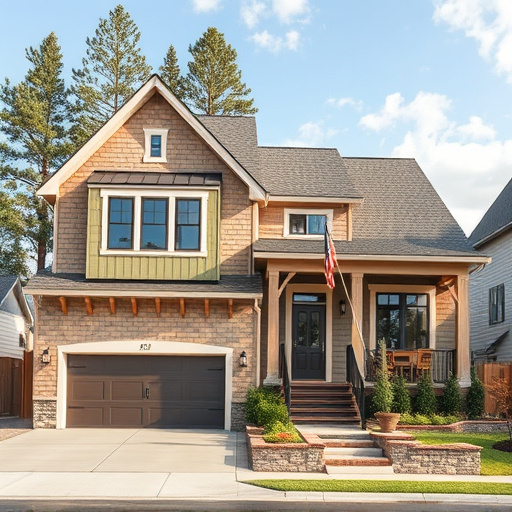
Open-concept spaces have become a prominent trend in modern commercial design, offering a multitude of benefits that enhance functionality and aesthetics. By eliminating traditional walls, businesses can create fluid environments that promote collaboration and improve overall productivity. This design approach encourages open communication among employees, fostering a sense of community within the workspace. Moreover, it allows for flexible layouts, catering to various business needs—from accommodating large meetings to providing quiet focus areas.
In commercial settings, such as offices, retail stores, or even restaurants, implementing an open concept can significantly impact employee satisfaction and customer experience. It facilitates easier movement and flow, reducing the sense of being confined in a boxy layout. Furthermore, it enables businesses to create visually appealing spaces that leave a lasting impression on clients and visitors. With the right customization and home renovation techniques, as seen in bathroom remodel projects or customized home renovations, commercial spaces can be transformed into vibrant environments that reflect modern design trends while catering to specific business requirements.
– How open plans enhance productivity, creativity, and team dynamics
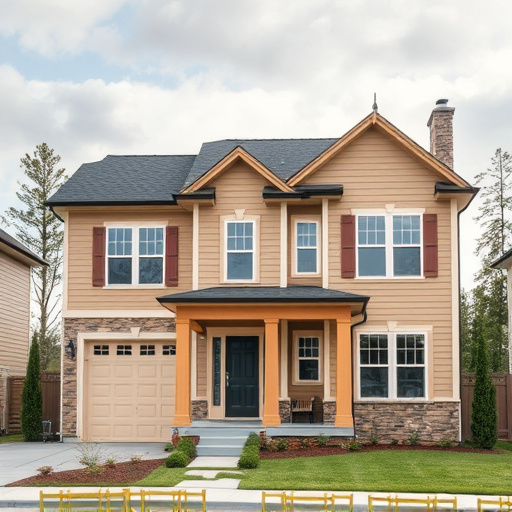
Open concept layouts have become a prominent trend in commercial design, transforming traditional office spaces into vibrant and dynamic environments. This design philosophy prioritises fluidity and connectivity, where walls are removed or reduced to create expansive, uninterrupted areas. Such open plans offer numerous advantages for businesses, especially in terms of fostering productivity and creativity among employees.
In the realm of commercial design, open concepts promote collaboration and communication among team members. With fewer physical barriers, colleagues can easily interact, share ideas, and engage in informal discussions, enhancing overall team dynamics. This layout encourages a sense of community within the workplace, which can boost morale, stimulate innovation, and contribute to a more positive and productive work environment. Moreover, functional spaces that seamlessly blend different areas cater to diverse working styles, accommodating various tasks from focused individual work to collaborative brainstorming sessions, thereby maximising employee efficiency.
In today’s dynamic business landscape, open-concept trends are reshaping commercial design. By adopting flexible layouts and fostering collaborative environments, companies can significantly enhance productivity, creativity, and team dynamics. The rise of open-plan spaces offers a modern approach to workplace design, catering to the evolving needs of contemporary businesses. Embracing these innovations in commercial design can drive success by creating dynamic, interconnected spaces that inspire and engage employees.








